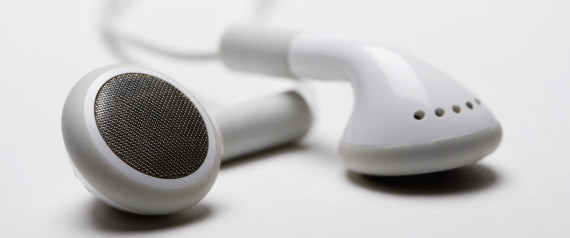Strict rules on headphones implemented

Close up of earbuds
A reminder posted on Lincoln’s homepage last month re-ignited debate over a controversial rule banning headphone use in the hallways.
The school implemented the rule a few years back for two reasons, says security officer Stan Caples. The first is to prevent students from bumping into each other in the halls. The second, he says, is less obvious: to keep students safe from external threats.
Portland Public Schools’ active shooter protocol calls for Caples to yell “shooter” to alert students of the threat. Caples recently demonstrated this by yelling “get down” in one of Lincoln’s crowded hallways. When he did, he found that one student just 30 feet away from him did not hear the warning because he had headphones in.
“As everyone knows, my voice is loud,” he says, and students behind the headphone-wearing student heard. For him, warnings about shooters are just one of the many reasons students must be alert while walking in the hallways.
Lockdowns, fires and earthquakes are other problems that students hear about through intercom announcements or bells. Caples’ ultimate job is to keep students safe, and he feels that to do that, students need to be tuned in to their surroundings, not their favorite band.
He compared the no-headphone policy to the rule that students may not wear hoods in the hallway. This is also for safety.
“With hoods on, I can’t identify if people are my students or not,” Caples says.
In 2008, Caples saw three men wearing hoods enter the building, and, unable to see their faces, assumed they were students. A few minutes later, a student came to Caples to tell him that another student had been jumped by the three men. Caples has tried to make sure that this never happens again by enforcing the no-hoods rule.
The restrictions are enforced inside the building during school hours. With the building bursting with students, weaving around the hundreds of others crowding the halls is hard enough without the distraction of music, Caples believes. He also worries that headphone use encourages students to look at their phones to choose the music, an even bigger distraction.
Students are generally opposed to the rule, but “when I explain it to them, they usually understand,” Caples says.
“I think it’s totalitarian to an extent, but it’s net beneficial,” junior Maia Abbruzzese says. “I get it as a safety measure, the school has obligation to protect student safety.”
Other students disagree.
“In my opinion, headphones don’t obstruct your ability to stay alert,” says freshman Adam Forhat. “You can still see and probably hear, too.”
Sophomore Wilson Walker disagrees with the sweeping nature of the rule, which includes banning earbuds, even in one ear. “I don’t see the problem unless you’re wearing headphones,” he says.
“I get it during the passing periods, it’s a safety issue, that’s okay. But during the middle of lunch, it shouldn’t be enforced,” adds sophomore Fiona Norton.
Students do agree with Caples on the distracting nature of phones, however. When students are on their phones, “they’re in a different world,” says Abbruzzese. “That’s a big danger.”
Norton thinks that phones are a bigger problem than listening to music, and they don’t necessarily lead to one another, one of the justifications for the rule. “I think music is a totally separate thing,” she says.
Neither Caples nor Vice Principal Sean Mailey knew of a specific incident that prompted the recent reminder on the school webpage, but the rule is always in place.
“The bottom line is, I need to keep students safe,” Caples says.

Moira Blythe • Feb 14, 2018 at 6:43 am
My sister is a senior in high school and their school is updating their rules on music and headphones as well. I appreciate the concern for safety, but I agree with the student that says that headphones should be allowed during the break times. This conversation really helps me understand how headphones at school can be helpful. http://www.learningheadphones.com/